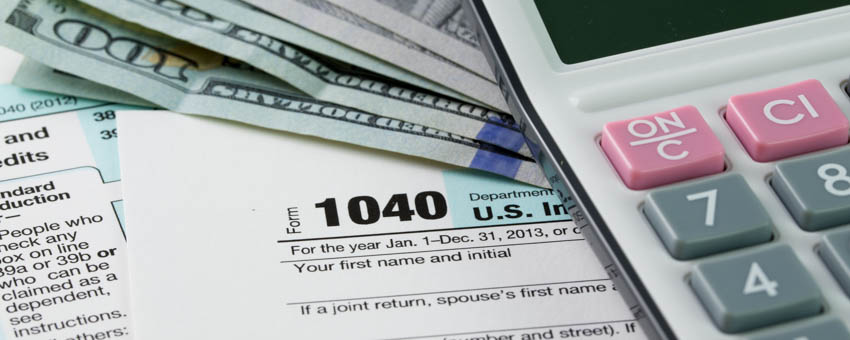5 Reasons Your Homepage is Losing You Revenue
Updated on July 15, 2021 Over the years, I’ve discussed different aspects of website design, ranging from must-have elements to must-avoid revenue-killers. Today, I want to spend some time focusing on the POWER of the homepage.
Over the years, I’ve discussed different aspects of website design, ranging from must-have elements to must-avoid revenue-killers. Today, I want to spend some time focusing on the POWER of the homepage.
FACT: 95% of prospects will check out your website BEFORE they ever call or visit your business.
And where is the first place they usually go? Your homepage.
Here’s how to tell if your homepage is hurting or helping your bottom line…
If yours is like most businesses, your homepage receives more organic traffic (people finding your website via Google search results versus clicking an ad) than any other page on your website.
Your homepage is by and large the first impression prospects get of your business, and in this digital age, that concept IS reality.
There’s nothing I hate more than seeing a business spend money on promotion, only to visit their website and see that they’re sending 95% of those prospects to a homepage that isn’t optimized to convert leads.
So, here are the 5 biggest homepage missteps (and how to fix them) that business owners make:
1. Your homepage doesn’t work towards a purpose
Establish the overall purpose of your website before you even start it, and then ensure your homepage works towards that purpose.
Do you want people to call? To buy something? To give you their email address so you can follow up later?
Make your homepage work for you to obtain an action-oriented purpose. Ensure you have a Call To Action or CTA (statements that direct prospects to do something, e.g., “Call now!”). Include AT LEAST one of these CTAs on your homepage.
Check out PostcardMania’s homepage as an example. We have several CTAs, all of which offer something different yet work towards the same purpose — capturing contact information.
2. Your homepage doesn’t showcase BENEFITS
Simply having a purpose and a CTA isn’t always enough to compel action. You want to immediately show prospects how your product or service can improve their lives, make things easier for them or get them what they want most.
The way to do this: BENEFITS. Not features!
Even professional copywriters can struggle with this concept, so let me break it down with a few examples:
- Roofing Feature: We offer ABC Brand slate shingles
Roofing Benefit: Get a stylish roof that will remain leak-proof for 10 years — guaranteed
- Dental Feature: We offer digital x-rays for all patients
Dental Benefit: Correct diagnosis guaranteed the FIRST time, with less radiation than traditional x-rays
Features are what YOU have; benefits are what YOUR PROSPECTS GAIN. Focus on benefits and make it obvious that you’re the best choice.
3. Your call to action blends into the background
Don’t make your visitors scroll around before they see your call to action — present your CTA front and center so it’s impossible to miss.
A study on call-to-action conversion rates found that by simply changing the color emphasis on your call to action (from a color that matches your site to a totally different color entirely), you can increase the amount of people who take action by 35.81%.[1] That’s a huge difference for such a small change! And it doesn’t have to match the rest of the site or your logo or anything – the bigger the contrast the better!
4. Your homepage loads too slowly
We are no longer in the dial-up age of the Internet. Web users expect fast loading times, and if your website takes too long to load… I’m talking just seconds here… you’ll lose visitors.
Cut out anything that slows your homepage down. You want your loading time around the two-second mark — ideally, less!
Here’s some interesting proof:
Retail giant Walmart ran a test on their website’s load time and found that for every one second faster their website loaded, the conversion rate of non-buyers to buyers increased 2%.
Takeaway? Speed matters!
5. Your website is not responsive
What the heck does that mean? Keep reading…
If your website is responsive, that means it’s mobile friendly and will automatically adjust to fit the screen of the device your visitors are using (smart phones, tablets, etc.).
Here’s why you should care about website responsiveness:
Over 60% of ALL online traffic now comes from mobile devices.[2] In addition, Google recently updated their mobile search to favor websites that are mobile friendly/responsive.
So what does Google’s latest change mean for you?
If your website isn’t responsive, Google will drop your site in its search results for mobile users — more than half the people online!
If you want to see if your website is responsive, Google has a Mobile-Friendly Test that will tell you. Plus, it will even show you what your website looks like on a smart phone. Try it out!
There you have it: the 5 biggest mistakes you make with your homepage.
Go to your website right now and take a long, honest look at it. How does it stack up? Use these tips to create a homepage that is a revenue-generating machine!
Have any questions? Put them in the comments section below or email me directly at Joy.Gendusa@postcardmania.com. If you’d like some help designing your website, give us a call at 1-800-628-1804 to speak to one of our website professionals.
Best,
Joy





